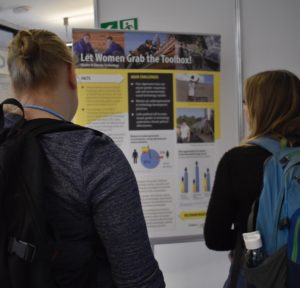 This afternoon, I had the privilege of attending a side event titled, “Climate Friendly Technologies: Improving Adaptive Capacity of Women and Building Resilience.” The discussion revolved around ways in which technological advances can empower women in developing nations and simultaneously help them overcome issues caused by climate change. Leading the event were four panelists: Priyadarshini Karve, an Indian physicist and engineer; Dr. Saleemul Huq, a London-based Bangladeshi scientist at the forefront of the climate change discourse; an Indian climate engineer named Siddharth, and an engineer/climate expert from Practical Action, a tech NGO.
This afternoon, I had the privilege of attending a side event titled, “Climate Friendly Technologies: Improving Adaptive Capacity of Women and Building Resilience.” The discussion revolved around ways in which technological advances can empower women in developing nations and simultaneously help them overcome issues caused by climate change. Leading the event were four panelists: Priyadarshini Karve, an Indian physicist and engineer; Dr. Saleemul Huq, a London-based Bangladeshi scientist at the forefront of the climate change discourse; an Indian climate engineer named Siddharth, and an engineer/climate expert from Practical Action, a tech NGO.
The panel offered several case studies demonstrating the emancipation of women in India and Bangladesh through adaptive technologies. Karve offered insight into the process of technology implementation in rural India. Her company, Samuchit Enviro Tech, is on the leading edge of culturally sensitive adaptive technology, simply because they take the time and effort to learn about their target culture before building anything at all. They travel to remote regions of India, where their clientele are based, and first conduct focus groups and surveys specifically with women. Their intent is to understand what it is that women want, what they value culturally, and what would work best in their environment.
A perfect example: cook stoves. Women in India are almost ubiquitously the sole chef of the household. They provide for the family day in and day out, not just by cooking; they gather the firewood – they cook over open stoves – and materials necessary for a meal. Samuchit went into these rural villages wanting to provide cleaner, more efficient cooking technology that would not only benefit families’ health, but also make the process of cooking more efficient for women. Attempting to create a fitted, specialized product, Samuchit had to ask questions like:
- What are you generally cooking? Is this a rice-eating region or a roti-eating region?
- What kind of cooking vessels do you use? Do you cook for a small or big family?
The answer to each of these example questions affects the kind of product Samuchit would create. If a woman cooks rice, the company would create a stove suited for boiling water. If she cooks roti, they’d create a stove better suited for open grilling. Smaller, shallower vessels require a different type of stove from big, deep vessels.
After conducting research and introducing new technology, Samuchit invites women who want to learn about tech to be trained in the implementation and technical use of a product. Their participation, however, is not a precondition of the project; Samuchit’s goal is not to create entrepreneurs, but rather to facilitate a more dignified, efficient way of life suited to the culture and tradition of different women around the world.
At the heart of this case study, as well as the other studies presented, is the idea that creating regionally specific technology can put women at the center of the decision-making process surrounding adaptive technology. The existing success of women-centric technology (Karve shared that the cook stove project had an 80-90% retention rate) should give us hope that the global confrontation of modernization and climate change can be an unprecedented opportunity to create more gender equity.
